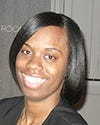Closing the nutrition-knowledge gap
An FSD hired a registered dietician to make sure her frontline staff knew enough about what they were serving to answer customers’ questions with confidence.
Earlier this year, Megan Waltz, director of nutrition and culinary services at UW-Health, the health system for the University of Wisconsin in Madison, noticed a sizeable gap in frontline staff’s knowledge about the food they served. To arm them with info and insight, she hired a registered dietitian to educate the employees on a variety of nutrition-related topics—everything from customer service to gluten-free food to portion control.
“People would come in and ask staff what’s gluten-free, and staff would tell them they didn’t know,” said Waltz. “I feel that it has really helped the department operate more efficiently.”
The RD educates through new employee orientation, cooking demos and group training sessions, and is also available for one-on-one training for employees with language barriers or special training needs.
“Let’s say an employee is taking care of the salad bar, and we see the fruit isn’t cut the way it should be,” said Waltz. “The RD will train that person one-on-one to give them a better understanding of the task.”
Training is mandatory for all employees, 75 percent of whom work full-time. Employees are paid for time spent in training sessions, which typically take place before or after their shifts. In new employees’ first week, they spend one day in hospital training and a second day with the RD, who teaches them food safety basics, which they are later tested on.
Hiring an RD gives the health system an opportunity to educate consumers and patients as well, said Waltz. “I think people have good intentions when they want to give nutritional information and reinforce good eating habits with children. We just want to make sure that what they’re saying is evidence-based information. Bringing in someone with that educational background really helps us ensure we’re doing just that.”
One challenge is ensuring everyone gets trained. “Night staff are harder to reach because they work overnight, so the RD comes in earlier in the morning to catch them before they leave,” said Waltz.
Despite that obstacle, employees’ response to the training from the RD has been positive, Waltz says. “They love her— it’s nice because she works side by side with them,” she comments, adding that the RD has started to cultivate trust with employees and managers, who are voicing matters they wouldn’t normally share.
Waltz hopes the RD’s presence will make staff members more comfortable and demonstrate UW-Health’s willingness to help them develop new skills. Additionally, she hopes this newfound communication will improve her employee retention rate, which hovers around 50 percent, “I’m hoping to see some positive improvement with that,” she said. “(The RD) has only been in her role since February, so we’ll look at our employee retention rate in a year and see how we’re doing.�”
The RD initiative has generated buzz among Waltz’s peers, some of whom have asked her for help when looking to hire RDs of their own. It has also sparked interest with UW Health’s wellness staff, as they have many programs that contain food components. “It’s really helped their program and reinforced the food we’re providing to the wellness program,” said Waltz. “They’re now launching ‘Unwrapped,’ a program to increase fruit and vegetable intake among employees.”
One thing’s for sure: Waltz’s expectations for her employees have changed since the RD joined her team. “I don’t like the answer ’I don’t know,’ or ‘No one told me,’” she said. “Those are not appropriate answers because there is someone available to go to.”
About the Author
You May Also Like






